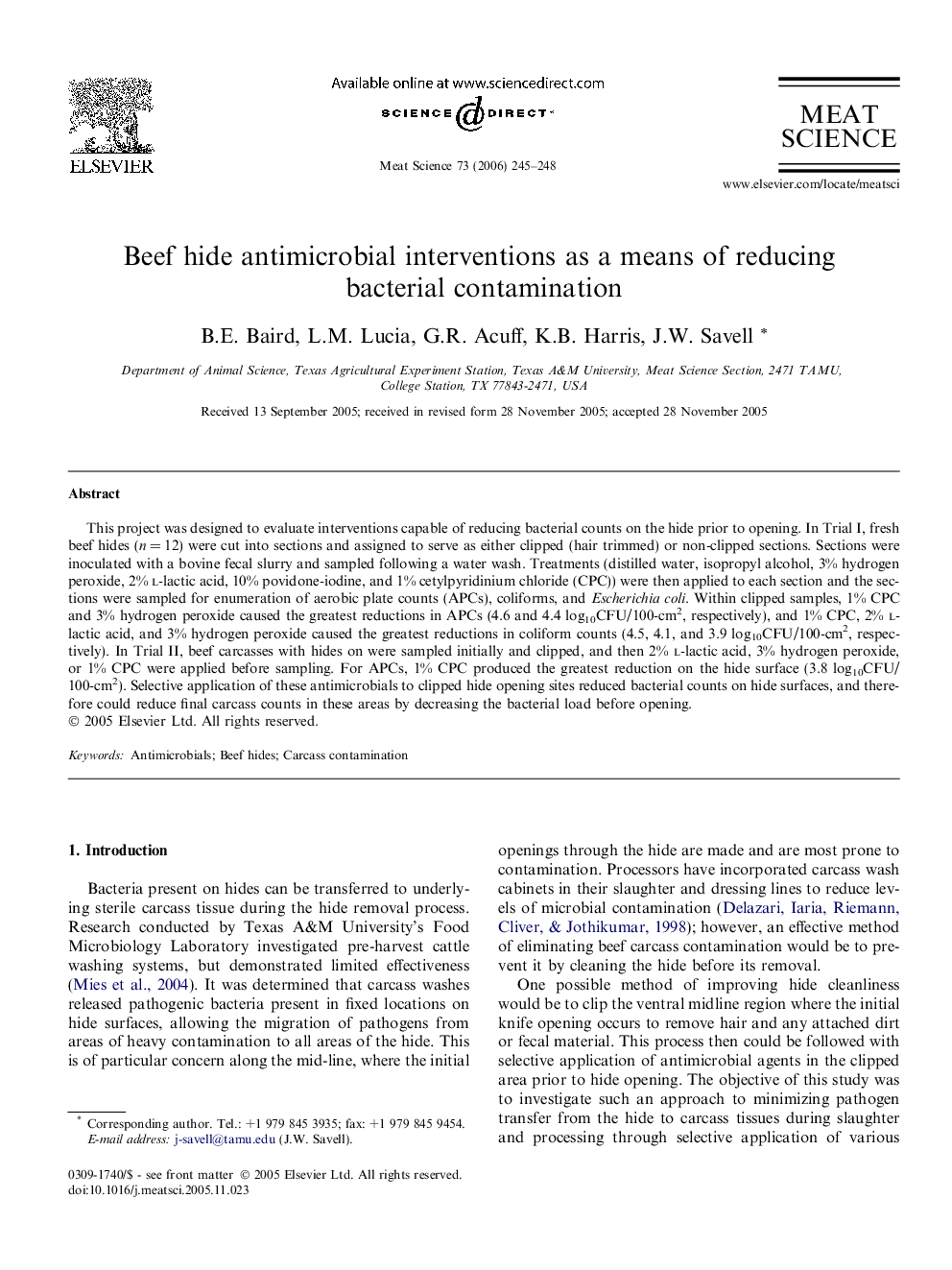| Article ID | Journal | Published Year | Pages | File Type |
|---|---|---|---|---|
| 2452126 | Meat Science | 2006 | 4 Pages |
This project was designed to evaluate interventions capable of reducing bacterial counts on the hide prior to opening. In Trial I, fresh beef hides (n = 12) were cut into sections and assigned to serve as either clipped (hair trimmed) or non-clipped sections. Sections were inoculated with a bovine fecal slurry and sampled following a water wash. Treatments (distilled water, isopropyl alcohol, 3% hydrogen peroxide, 2% l-lactic acid, 10% povidone-iodine, and 1% cetylpyridinium chloride (CPC)) were then applied to each section and the sections were sampled for enumeration of aerobic plate counts (APCs), coliforms, and Escherichia coli. Within clipped samples, 1% CPC and 3% hydrogen peroxide caused the greatest reductions in APCs (4.6 and 4.4 log10CFU/100-cm2, respectively), and 1% CPC, 2% l-lactic acid, and 3% hydrogen peroxide caused the greatest reductions in coliform counts (4.5, 4.1, and 3.9 log10CFU/100-cm2, respectively). In Trial II, beef carcasses with hides on were sampled initially and clipped, and then 2% l-lactic acid, 3% hydrogen peroxide, or 1% CPC were applied before sampling. For APCs, 1% CPC produced the greatest reduction on the hide surface (3.8 log10CFU/100-cm2). Selective application of these antimicrobials to clipped hide opening sites reduced bacterial counts on hide surfaces, and therefore could reduce final carcass counts in these areas by decreasing the bacterial load before opening.
